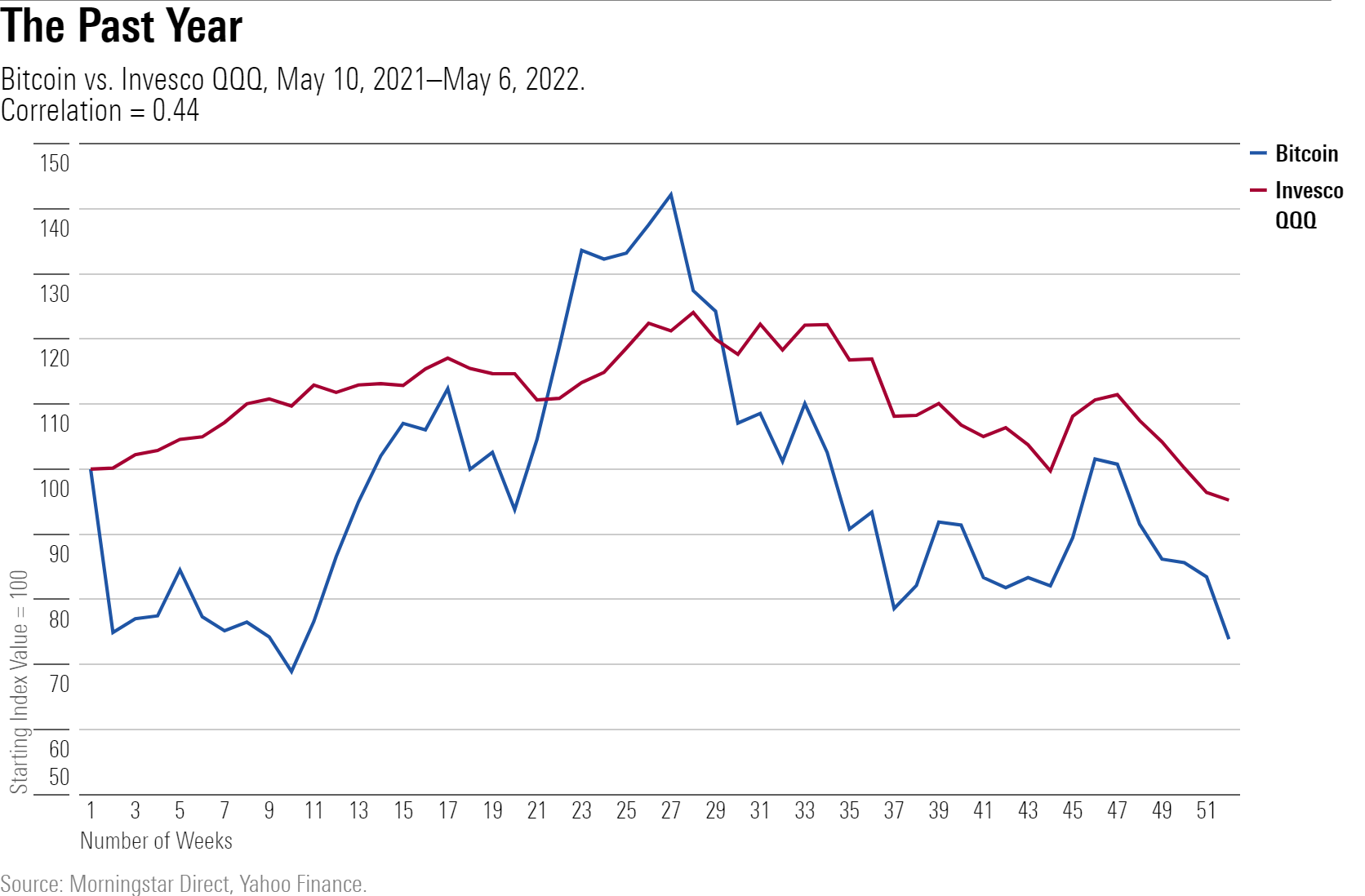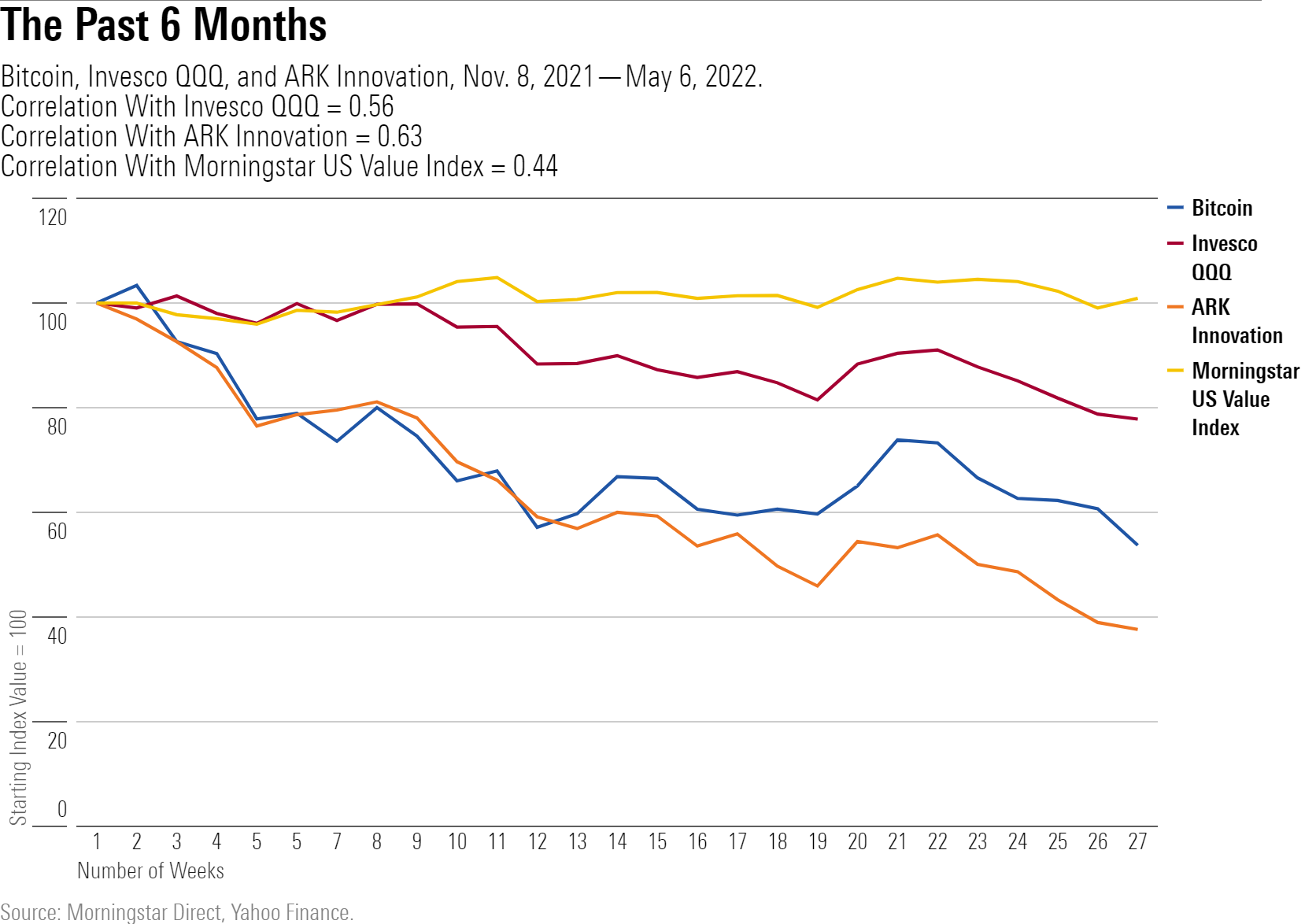Cryptocurrency Is Failing Its Investment Test
Why own an umbrella that does not block the rain?

Bad Timing
Julius Caesar once suffered through a similar week, during mid-March, 44 B.C.
It has been just about that disastrous for cryptocurrency. Over the past several days, the "stablecoin" UST, designed to be worth one U.S. dollar, plunged to $0.26. (Some "currency" that!) The stock of cryptocurrency exchange Coinbase COIN—the National Basketball Association's exclusive crypto platform, should you care—shed more than half its value. And the price of the oldest cryptocurrency, bitcoin, dropped 30%.
The industry's struggles illustrate the logic behind the SEC's go-slow approach to cryptocurrency approvals. Although cryptocurrency vendors claim to have sorted through the details—UST was not called an "unstable coin," after all—they overstate what they know and can deliver. As with their customers, the industry's vendors are learning as they go. The field remains new, untested, and fickle.
All that is acceptable, as are the investment losses. If I were to dismiss every asset that has on occasion been misunderstood, while disappointing its owners, pretty much all equities and real estate would be banished, along with most bonds. The drawback of cryptocurrency as a potential investment is not that it sometimes flops. It is instead the timing of its current problems.
The Glory Days
Because cryptocurrency's invention is a mystery wrapped in a shroud, we do not know to what extent cryptocurrency was intended to be an investment. (Probably not much; the white paper that accompanied bitcoin's creation emphasizes the prosaic details of the payment system, rather than cryptocurrency's revolutionary powers.) Be that as it may, people quickly realized that they might profit more from trading cryptocurrencies than from using them to buy goods and services.
And profit they did, in the best possible way. Not only did cryptocurrency rapidly appreciate—for this column, I will show only the performance of bitcoin, but my comments apply to the industry overall, since the major cryptocurrencies behave similarly—but it did so on its own terms. Cryptocurrency performances were not closely correlated with other assets, meaning that in addition to providing gains, the investment helped to diversify portfolios.
Consider, for example, a relatively staid early period, from September 2014 to September 2016. Over those two years, bitcoin almost exactly matched the total return for Invesco QQQ Trust QQQ, an exchange-traded fund that tracks the Nasdaq 100 Index. However, as the following chart demonstrates, the two investments very much went their separate ways.

As indicated by the 0.07 correlation between the two sets of weekly returns, there was almost no relationship between bitcoin and Nasdaq stocks. Consequently, investors would have done well to own both. The combination exemplified the founding principle of Modern Portfolio Theory: Better to spread one's assets among different risky assets, than to hold more of the same.
The Stars Align
Over time, however, the link between cryptocurrency and the U.S. stock market (meaning also global equity markets) began to strengthen. This pattern was obscured because cryptocurrency was so capricious. It was difficult to perceive bitcoin's connection with anything when it gained 1,325% in 2017, or when it lost 72% the following year. More recently, though, the connection has become all too clear.
The next graph depicts the same investments of bitcoin and QQQ, but on this occasion over the trailing 12 months, through last Friday. The two assets began by moving in opposite directions, with bitcoin slumping while QQQ advanced. Soon though, they began to move largely in tandem. Their correlation for the full year was 0.44. Crypto still offset growth stocks, but its usefulness was declining.

Unfortunately, the relationship between two investments was strongest when diversification mattered. Having one investment zig during a bull market while the other zags may show that portfolio obeys the principles of Modern Portfolio Theory, but it solves no problems. What counts is how the assets perform during downturns. And during the second half of the period, QQQ had begun to fall. That was the time for crypto to prosper, or at least hold its own.
Instead, it dropped even further than the Nasdaq index, while following a similar pattern. It is not that Nasdaq stocks declined for one reason, while cryptocurrency fell for another. The returns of the two investments were clearly and openly related. Whatever factors dragged down one also dragged down the other.
Also affected, of course, was ARK Innovation ARKK, the riskiest of technology funds. In fact, bitcoin was even more correlated with ARK's fund than it was with QQQ. Exactly what one would not wish to hear during a growth-stock bear market!

The strongest testament to cryptocurrency's inability to improve a growth-stock portfolio is that U.S. value stocks behaved less like QQQ than did bitcoin. The top line of the above chart, in yellow, depicts the total returns over the past six months for the Morningstar US Value Index. As evidenced by the eye test, as well as the official correlation statistic, holding value stocks better diversified a portfolio of growth stocks than did owning cryptocurrency.
Such performance must be considered deeply disappointing. Cryptocurrency has been promoted as a virtual alternative to gold—an asset that hedges against a loss of confidence in the global financial system. In particular, it has been touted, both by outsiders and by industry executives, as an inflation hedge. Hmmm. Global inflation is currently raging, thereby clobbering stock prices. The apparently perfect climate for cryptocurrency has instead been perfectly awful.
John Rekenthaler (john.rekenthaler@morningstar.com) has been researching the fund industry since 1988. He is now a columnist for Morningstar.com and a member of Morningstar's investment research department. John is quick to point out that while Morningstar typically agrees with the views of the Rekenthaler Report, his views are his own.
The opinions expressed here are the author’s. Morningstar values diversity of thought and publishes a broad range of viewpoints.

/s3.amazonaws.com/arc-authors/morningstar/1aafbfcc-e9cb-40cc-afaa-43cada43a932.jpg)
:quality(80)/cloudfront-us-east-1.images.arcpublishing.com/morningstar/HTLB322SBJCLTLWYSDCTESUQZI.png)
:quality(80)/cloudfront-us-east-1.images.arcpublishing.com/morningstar/TAIQTNFTKRDL7JUP4N4CX7SDKI.png)